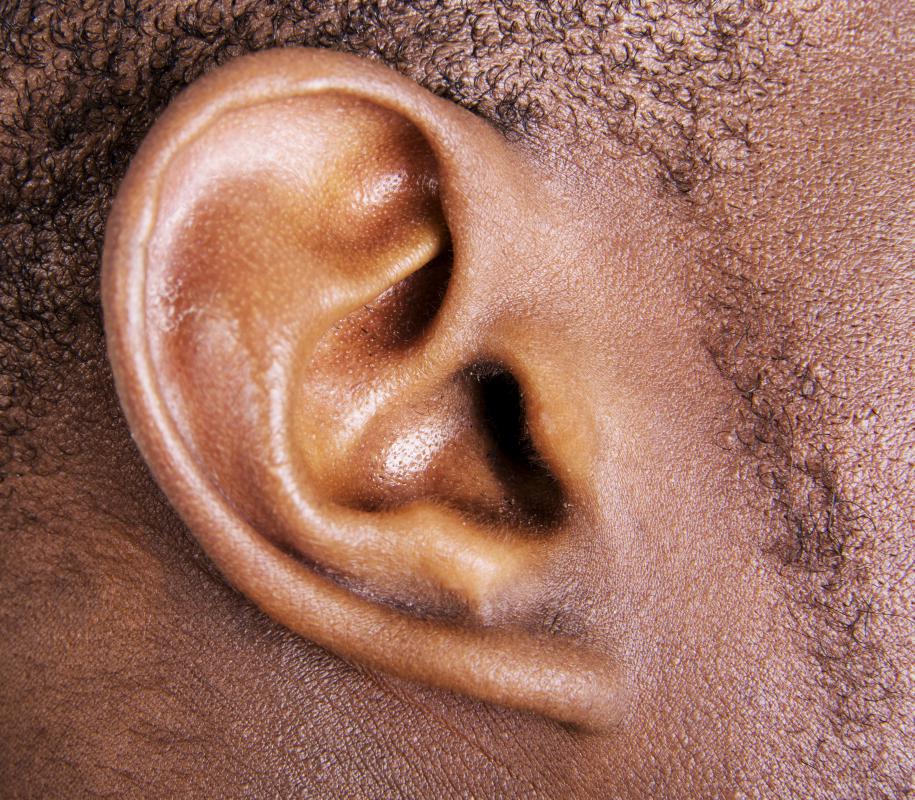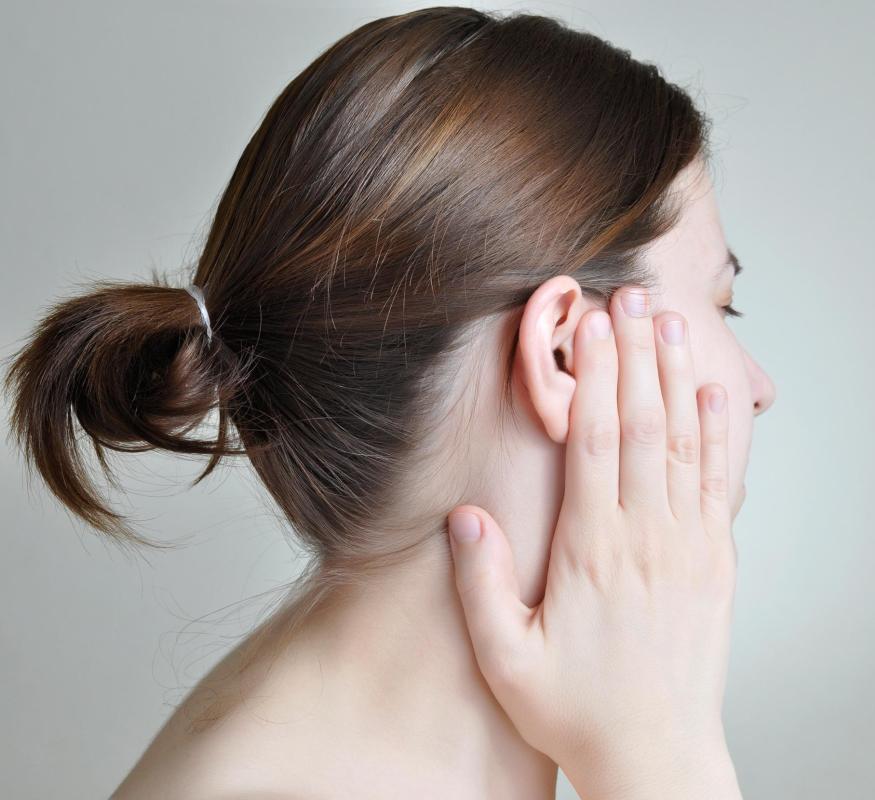At WiseGEEK, we're committed to delivering accurate, trustworthy information. Our expert-authored content is rigorously fact-checked and sourced from credible authorities. Discover how we uphold the highest standards in providing you with reliable knowledge.
What is Conductive Deafness?
Conductive deafness is hearing loss caused by some defect in the ear’s ability to conduct sound waves. Sounds become muffled or distorted because of a physical impediment in the outer, middle or inner ear. In some cases, this impediment passes naturally or can be removed through treatment, but some instances of conductive deafness are permanent.
The ear works by carrying sound through the ear canal to the eardrum. Sounds cause the eardrum to vibrate, and these vibrations are passed along a set of bones called the ossicles to the cochlea. Fluid inside the cochlea carries the vibrations, and this motion is detected by tiny hairs. Movement of these hairs triggers signals to the brain, and the signals are perceived as sound.

In cases of conductive deafness, the chain of vibrations is interrupted somewhere along the path. Vibrations can be interrupted in any portion of the ear, causing either partial hearing loss or total deafness. Any disruption along the neural pathway to the brain, or in the brain's capacity to translate the neural signal into meaningful sound, is termed "sensorineural deafness."

Earwax is a common cause of conductive deafness affecting the outer ear. When the ear canal is blocked, sounds reach the eardrum with less intensity, resulting in a muffled sound. Foreign objects in the ear canal produce similar results. This is one of the most easily treatable forms of this condition.
Perforation or rupture of the eardrum also can result in conductive deafness. Without a properly functioning eardrum, there is no mechanism to vibrate the ossicles and carry sound to the cochlea. Surgery is sometimes able to repair damage to the eardrum, but in other cases, the damage is permanent.

Obstruction in the middle ear often takes the form of fluid collecting behind the eardrum, such as with an infection or otitis media. Pressure in the middle ear prevents the ossicles from moving freely. When pressure cannot be reduced by other means, such as curing an infection with antibiotics, a stent might be required to drain the fluid.
Other conditions can create solid obstructions in the middle ear. Otosclerosis causes spongy bone tissue to form on the ossicles, hampering movement. The extent of the growth determines the degree of hearing loss.

Incorrect pressure in the cochlea can cause conductive deafness as well. A leak in the cochlea will drain away fluid essential in the transmission of vibrations. Excess pressure, such as that created by inflammation of the inner ear, does not allow the fluid to move freely, again preventing vibrations.
AS FEATURED ON:
AS FEATURED ON:














Discuss this Article
Post your comments